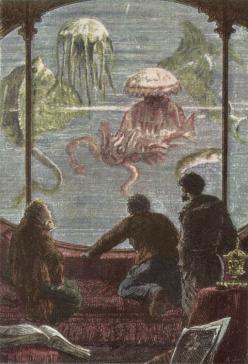Pamela Kort's project investigated how and why the disciplines of art, science, and fiction increasingly interacted between 1863 and 1969. This history affected not just avant-garde artistic practice, but also the manner in which a broad-based public became acquainted with developments in science. While 1863 saw the appearance of the first of Jules Verne’s roman scientifiques, 1969 marked the date that man finally landed on the moon. The year 1863 also brought the first series of images of “deep time.” Made by Ėdouard Riou, these full-page plates appeared in Louis Figuier’s widely read popular science book, La terre avant le deluge. Soon thereafter Verne commissioned their artist to make a number of the imaginative illustrations for his Voyages extraordinaires. Giorgio de Chirico was amongst the first artists to articulate the relationship of Verne’s style and Riou’s illustrations to the “metaphysical” quality of his painting. Max Ernst’s September 1919 encounter with that text—Sull’arte metafisica (1919)—and two reproductions of drawings by de Chirico within it, changed the course his work would take. Shortly thereafter, he also began to pursue the possibilities that Alfred Jarry’s notion of “pataphysics” held out for his art. Verne’s books only began to be integrated more fully into the French literary canon in 1949. More or less contemporaneously a steady stream of science fiction books, comics, and films began to appear on the market. All of this had far-reaching consequences for artists active during the 1950s and ‘60s in Europe and America.

